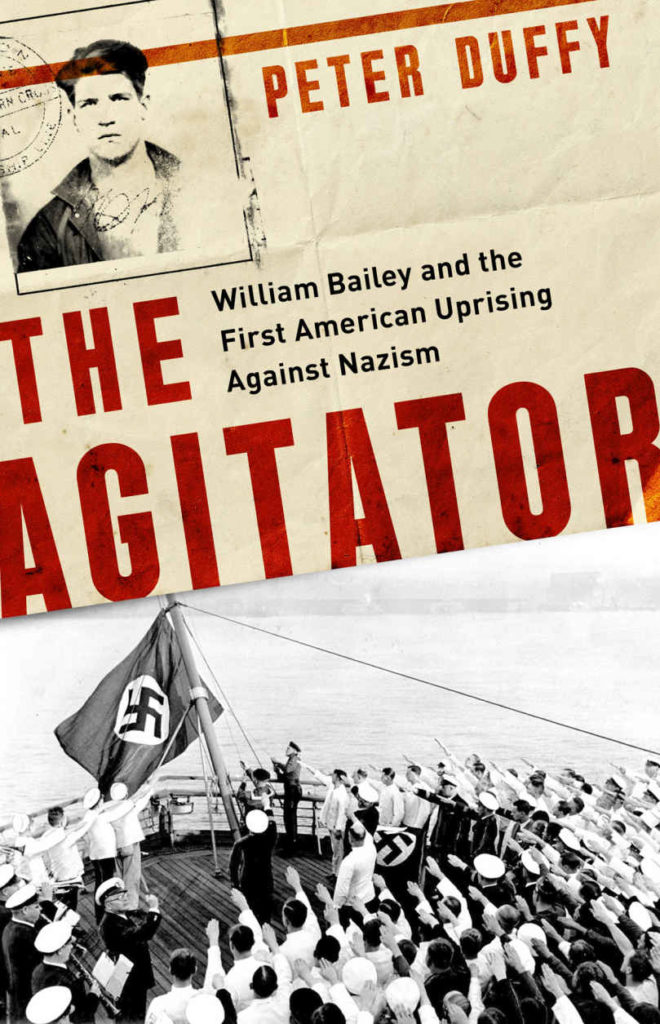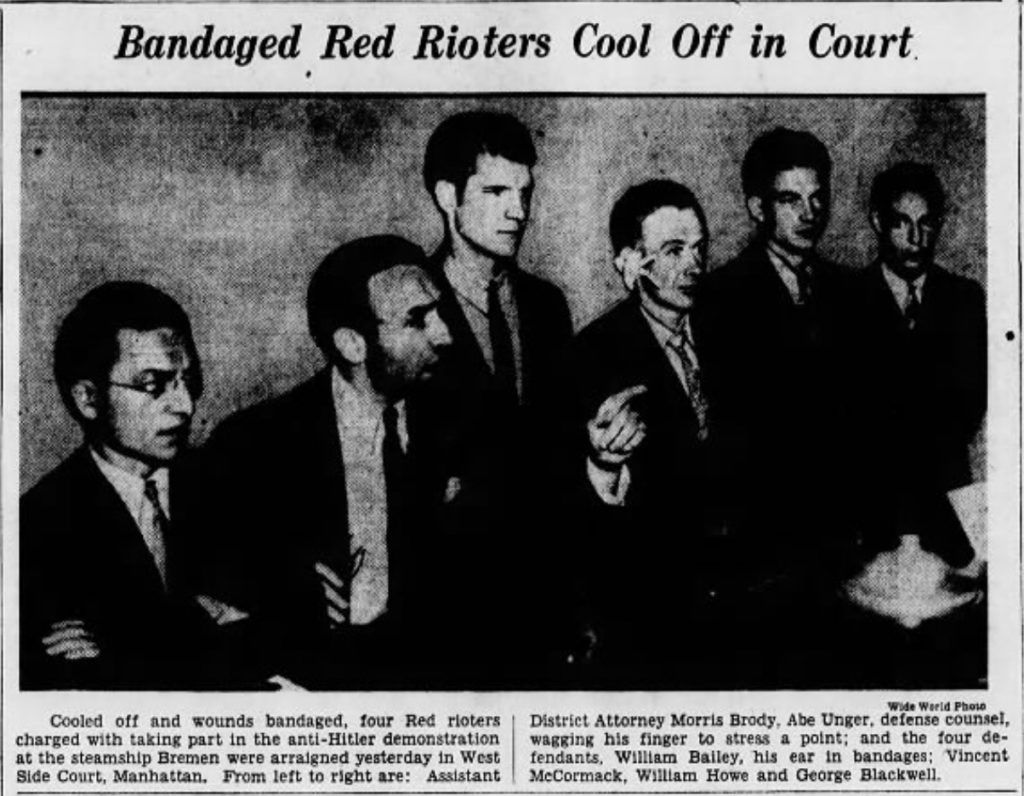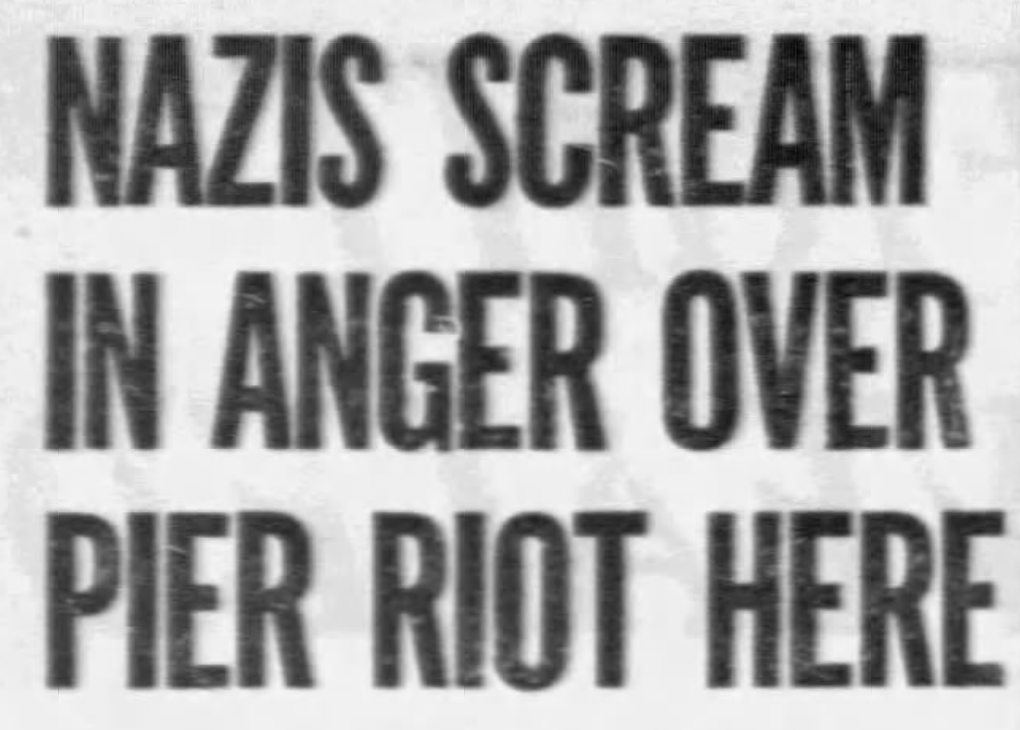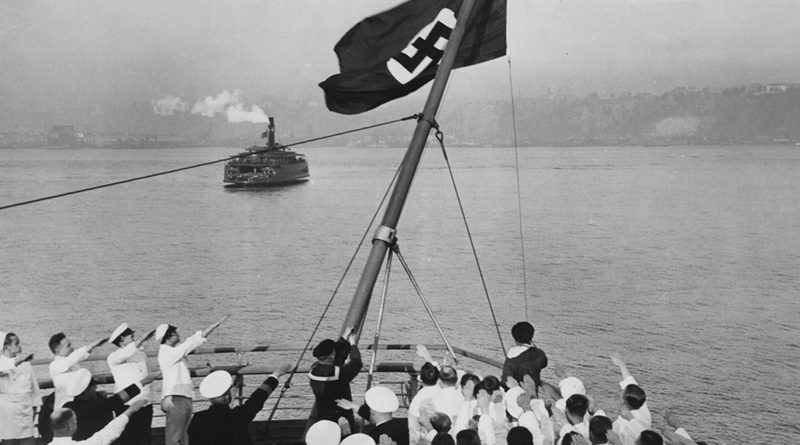Oh what a glamorous party! Those ‘midnight sailing parties’ along the Hudson River piers, partygoers boarding luxury ocean liners as the sun set, drinking and dining with passengers before the ship set sail for destinations abroad.
One hot summer evening of 1935, the crew of the SS Bremen welcomed almost 5,000 non-passengers aboard the jewel of the German ocean fleet, “a technical and aesthetic marvel regarded by the world as the water-borne embodiment of German nationhood.”
At the nose of the ship, a bright arc lamp illuminated a gigantic flag rising high over the piers, seen from the shoreline below. Its unmistakable insignia — the swastika of the Nazi Party.

The Agitator:
William Bailey and the First American Uprising Against Nazism
by Peter Duffy
Public Affairs Books
On July 26, 1935, William Bailey, the subject of Peter Duffy’s The Agitator, a firecracker of a book, led a scrappy, ragtag group of anti-Nazi protestors aboard the ship and — in a chaotic and riotous surge — succeeded in tearing down that Nazi flag.
The Bremen, as it were, was on Bailey’s turf. Born in Jersey City and raised in Hell’s Kitchen, Bailey became a merchant seaman and eventually a union activist, rugged and enthusiastic, who happened to come of age when the movement needed him most.

Duffy’s book also works as a history of early resistance efforts and protests in New York City, disparate groups (Jews, Catholics, union organizers, Communists) taking a stand against Nazi Germany at a time when most Americans were simply not paying attention.
At first the groups opposing Nazi appearances at the piers were “socialist student groups and anti-Fascist refugee committees and Communist peace leagues,” fringe groups that visiting German leaders managed to ignore. (“About those little things, those demonstrations,” said Hitler confidante Ernst Hanfstaengl. “I think they’re just trying to have a bit of fun with me.”)
But as Hitler escalated his reign of terror, New Yorkers were forced to take a look. By 1934, major department stores like Macy’s and Bloomingdale’s were boycotting German products and even Mayor Fiorello La Guardia was making minor gestures of protest. Still, the growing threat, the unimaginable horror to come, seemed of minor interest to most Americans.

Which makes the brazen and symbolic stunt by Bailey and his cohorts all the more remarkable. “In a proper world,” writes Duffy, “the name Bill Bailey would call to mind an indelible figure in the confrontation against international fascism …. He was a slum kid from a destitute Irish family, a reformed juvenile delinquent with a Hell’s Kitchen twang, who developed a political conscience by working in the decrepit freighters of the Depression-era seafaring trade.”
When he died in 1995, Bailey, who also fought in the Spanish Civil War had become defined by the Bremen incident. He spent his final years telling the story to whomever wanted to hear it. And now Duffy shares it with the world.
Below: A breezy little film clip — taken from the 1936 German film Spiel an Bord — documenting the SS Bremen. Nazi swastikas have conveniently been omitted! (But whoever edited this video has managed to insert an image into the footage.) The liner’s final journey to New York — no surprise — was in 1939. The ship was dismantled in 1942.
AND FINALLY: The Hudson River Piers weren’t the only place where Nazi’s were making an appearance in New York. In 1937, high over the skies of Manhattan, New Yorkers could witness the flight of the Hindenburg. Two years later, German-American supporters of the Third Reich convened at Madison Square Garden.

